With the sweet hot smell of rotting vegetation and humid conditions making camera equipment and lenses drip like something resembling the glass of an ice cold drink on on hot summers day, the challenge was going to be more than the usual logistical problem of lighting, schedule and brief.. this was going to be much more fun!
After initially uploading only one of the images from this shoot, I’ve finally got around to providing a little more on the subject.
The smell was sweet and sickly, this was the place that all the garden waste around the North-West tourist region around near Blackpool gets recycled and was a far cry from the breezy seafront and it definately wasn’t as hot there as it was here.
‘All the photos we take come out blurred and dark’ said the client.. ‘Not too dissimilar to this then’ I said after doing a quick test shot to get the measure of the situation…
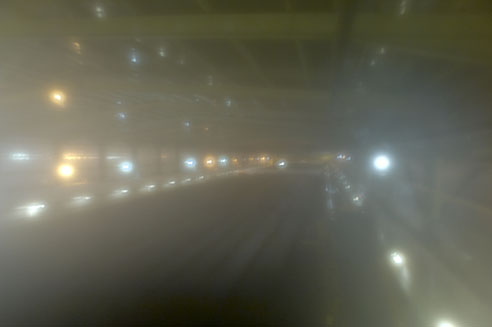
Industrial Photographic challenges of high humidity and large interiors
‘Pretty much like that – but yours is much better’ laughed the client.
As always we were prepared for such problems, working in such large environments inevetibly leads to requiring a plentful supply of lighting – and that we had in a van load. I was working with an assistant on this assignment and although the vantage point here illustrates footways and various locations to hide lights, actually getting to those locations with the lighting, clamps, stands and cases took a lot of legwork. The walkie-talkie instructions to adjusting the light outputs to provide the finished result was essential to ensuring we didn’t spend too long, and we managed to shoot the machinery in one of it’s productive cycles even whilst the machinery was moving and changing the lighting configuration.
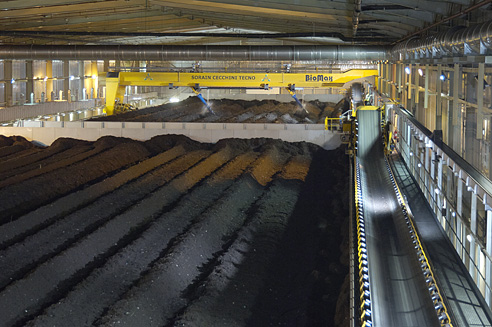
Waste treatment, composting area showing Biomax and Treeper
Quite possibly the difficulty of the environment doesn’t reflect in the results produced. Often, (and I’ll post another sample later) photographers will rely on available lighting rather than provide their own, which in some circumstances can work, but compared to positioning lights just where they’re needed, available light often provides inferior results.
Here’s an example of using available light compared to adding our own lights. The darker version was pretty much how the interior looked; quite dark, little detail in the dark compost and too much contrast in the scene. The added problem was vibration. Along with lots of other locations we’ve worked in the amount of movement in the stairways and access platforms was quite considerable.
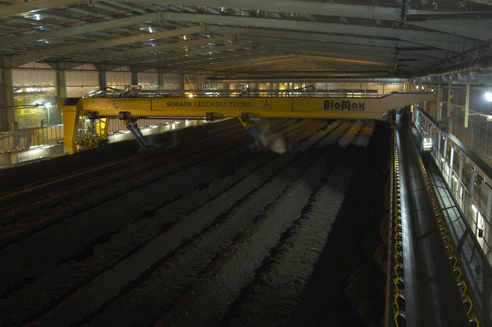
Who turned the lights out? Before and after professional photographic lighting for industry
Further up the process, the waste is continually rotated and moved across the composting area to enable the decomposing to take place. To this end large screws bring the hotter decomposing material from the bottom of the 3-4m pile to the top and water is added to aid the process.
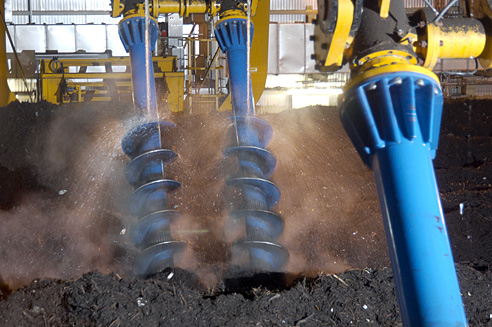
Biomax screws rotating decomposing
The waste is continually rotated across the filter beds until it exits the composting area via the conveyor system.
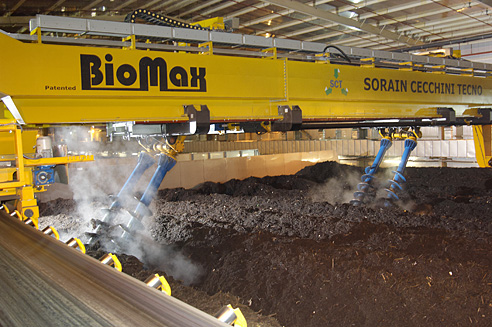
Biomax screws rotating decomposing material with conveyor system
Beneath all that waste are filter beds extracting water and gases for processing, along with ambient gas being processed by further exraction to peat filter systems. The scale of the process is probably better illustrated by the following images of the filter beds. It is easy to estimate from these the total mass of recycled waste which is being processed.
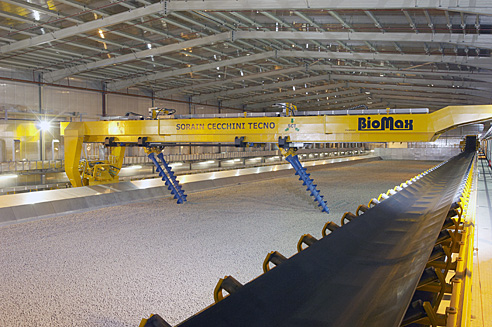
Waste treatment filter beds awaiting waste
The scale of the Industrial filter bed is quite staggering compared to the height of a worker inspecting the filter prior to commissioning.
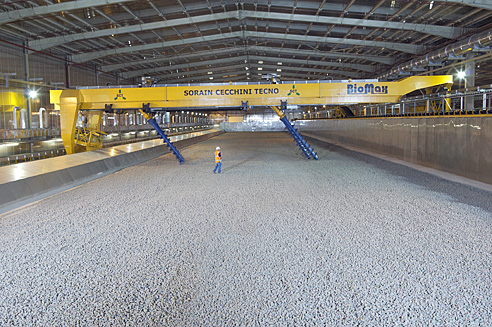
The scale of the filter bed is quite staggering
Prior to materials arriving at the composting area it is grappled into a crusher and graded through 3 different sized Trommels. These Trommels separate the smaller waste from the larger waste which is again crushed and revisits the system. The Trommel is like an inclined washing machine with large egress ports progressively getting smaller making the treatment of waste that more controlled in its process. In action, the waste tumbles around until it will eventually make its way to the bottom of the Trommel and commence recrushing or processing.
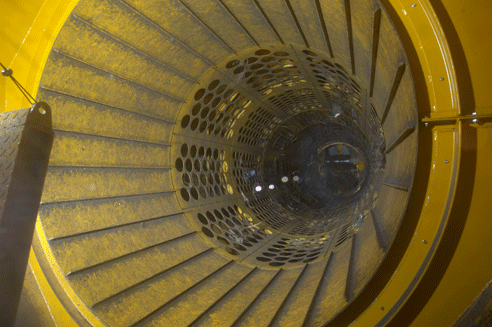
Inside a working Trommel
They’re not the prettiest of machines – they do after all deal with waste, but we managed to grab a couple of different images to illustrate the size and filter capabilities of the other two Trommels prior to commissioning.
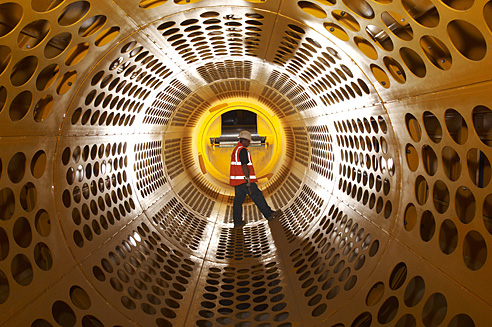
Inside the Trommel
There are three Trommels of varying sizes to treat reducing sizes of waste.
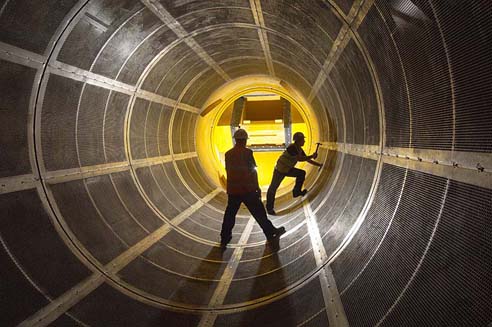
Inside the Trommel
The inclined Trommel can be clearly seen in the next photograph along with the associated conveyor feed and supporting machinery. The neccesity of lighting this area will become apparent in the following images, and is necessary to provide useable photographs for publication in marketing and publicity brochures, as well as to win further contracts in the same industry.
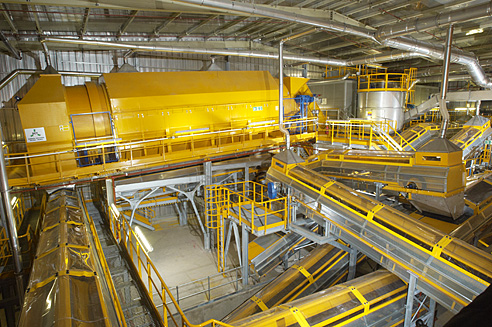
Industrial Interior showing waste treatment equipment and conveyors
We’re not shy on lighting. In my opinion it is absolutely necessary to portray our clients products to the best advantage, and multiple light heads are often needed to achieve that goal. As I stated previously, it is possible to ‘get away’ without introducing lighting, but often having the choice to introduce lighting can only be made if it is posessed. It is impossible to introduce if you don’t have it. Creating images by available light is just an excuse for lack of lighting if you don’t have that available.
So convinced am I of this, on this shoot I made a comparison image showing the difference, after all, if we were taking time to produce work which could capably be done in less time then we would be charging for our time unnecessarily. On one hand, the example illustrates how the available light produces a flat image with burnt out flourescent lighting and lacking depth and vitality, and on the other, the way it should be done. Having a van full of lighting serves more purpose than just getting the photographer to site.
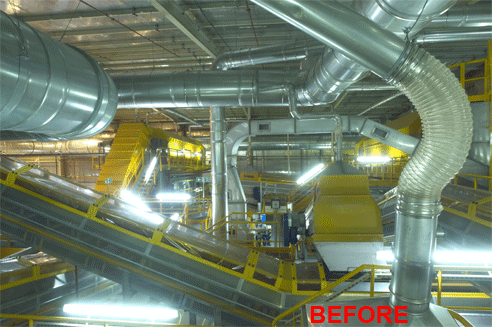
Industrial Interior photograph using available light compared to adding professional lighting
Working in the background to all this front end processing is the main control room monitoring the systems and programming the rate of rotation of the decomposing material. It was cooler and cleaner in here.
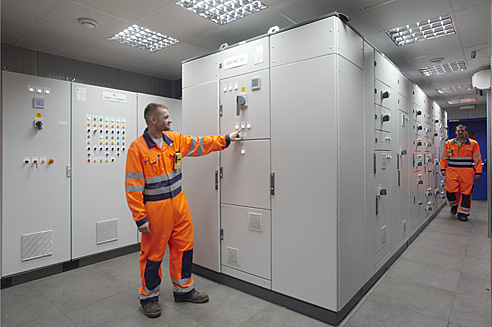
Industrial Control Room
The processes to handle and distribute gases, those which are recycled for heating and processes and cleaning of the remaining gases are handled by multiple Control rooms or ‘Fan rooms’ as they are referred. These were again lit to illustrate the size and quantity of engineering involved in their construction trying to illustrate different aspects of each.
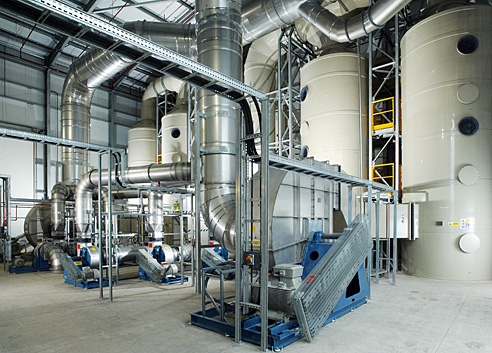
Industrial Fan Room - Plant Room 1
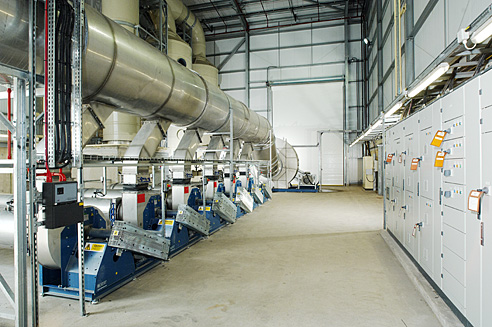
Industrial Fan Room - Plant Room 2
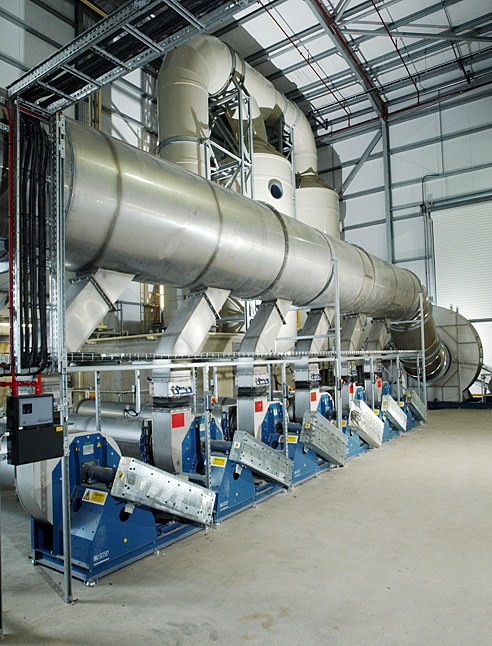
Industrial Fan Room - Plant Room 3
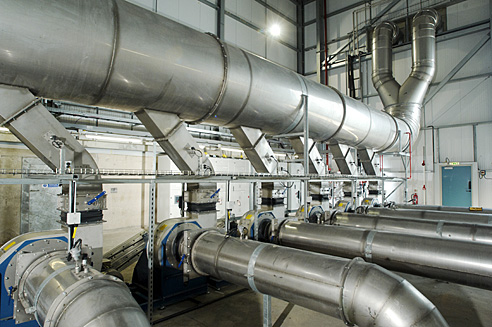
Industrial Fan Room - Plant Room 4
The methane gas collected from the decaying vegetation is cleaned and used to power and heat the plant. The cleaning and collection of this is done by filtering the gases through moist peat beds. The irrigation system for the peat beds is an important part of the process requiring the peat to be kept within specific moisture content levels to keep it active. I chose to photograph the start up routine to illustrate differing amounts of atmosperic water content to provide better visibility and to illustrate different distribution levels of the water system. Here are three variations of the start up process showing a variety in those levels.
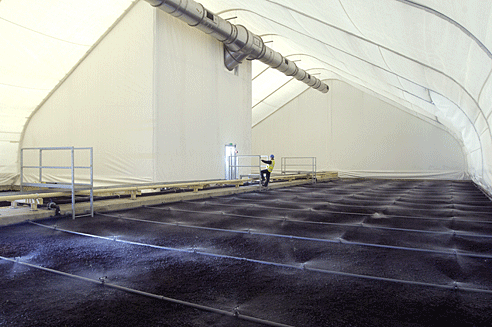
Peat methane gas filter system
Outside, the Peat filtration system resembles a large tent.
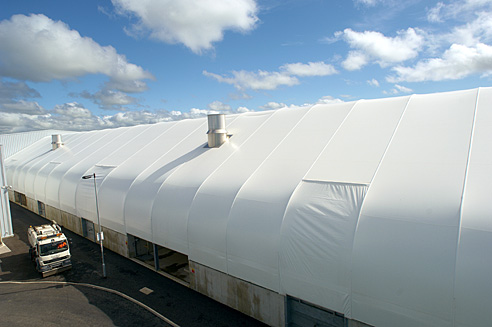
Covered Peat methane gas filter system
Incoming search terms:
Tags: commercial, commercial photography, Engineering Photography, Industrial Photography, Industrial Photography, Leyland, Location Photography, Photographer, Poulton-Le-Fylde, Preston, Recycling
Posted in Commercial Photography Commissioned Work Construction Photography Engineering Photography Industrial Photography Location Photography
Posted by Ian


















